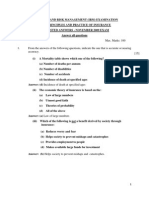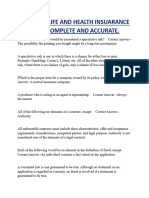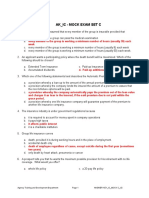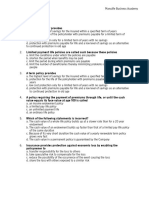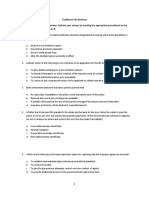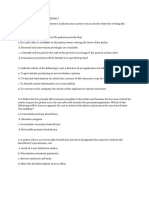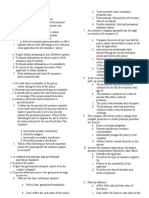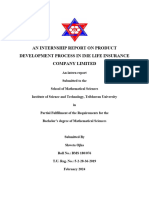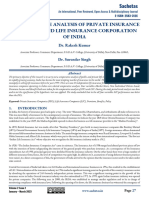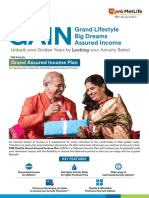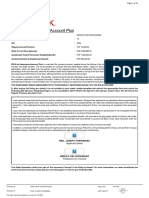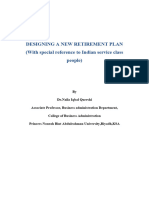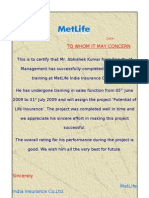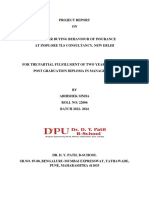0% found this document useful (0 votes)
37 views5 pagesFull Advanced Risk Assessment
The document contains a comprehensive assessment on advanced risk management, including multiple-choice questions, true/false statements, fill-in-the-blank items, and problem-solving exercises. It covers key concepts such as objective risk, indemnity principles, types of insurance policies, and calculations related to premiums and cash values. An answer key is provided for each section to facilitate self-assessment.
Uploaded by
dawitkidus111Copyright
© © All Rights Reserved
We take content rights seriously. If you suspect this is your content, claim it here.
Available Formats
Download as DOCX, PDF, TXT or read online on Scribd
0% found this document useful (0 votes)
37 views5 pagesFull Advanced Risk Assessment
The document contains a comprehensive assessment on advanced risk management, including multiple-choice questions, true/false statements, fill-in-the-blank items, and problem-solving exercises. It covers key concepts such as objective risk, indemnity principles, types of insurance policies, and calculations related to premiums and cash values. An answer key is provided for each section to facilitate self-assessment.
Uploaded by
dawitkidus111Copyright
© © All Rights Reserved
We take content rights seriously. If you suspect this is your content, claim it here.
Available Formats
Download as DOCX, PDF, TXT or read online on Scribd
/ 5





























